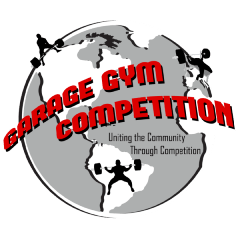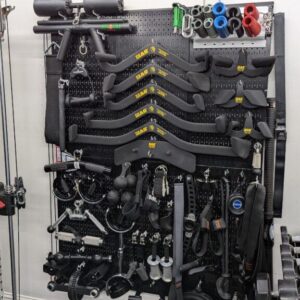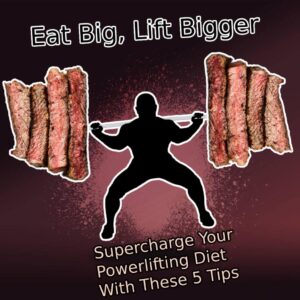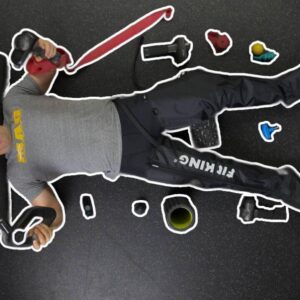Matthew Taylor
From eating disorders to broken bones, torn hamstrings and powerlifting records. Matthew Taylor is a dude who has made all the mistakes and been through a number of ups and downs, all so you don’t have to. Well, maybe that wasn’t his original idea. But as a coach, his goal is to help you avoid all of that and simply be a stronger version of your self.

Let’s Meet Matthew Taylor
I was born in Toronto ON and live in Vancouver, BC. I coach powerlifting online as my full time job. I work with a team of 2 other coaches and together, we help lifters get started in the sport of powerlifting by enabling them to compete in their first 1-3 meets, find the strongest version of themselves and do it all with less than 7 hours per week in the gym.
I enjoy the outdoors a LOT, so frequently get out to go hiking and mountain biking as it’s pretty world-class here in BC.

I played a couple sports growing up but was really horrible at them and am not particularly athletically gifted. Lifting was the first thing I felt like I could truly be good at since my performance was entirely a product of the work I put in to the programming and in the gym as opposed to relying on a team where I felt like I wasn’t directly in control of how well I could contribute to the success.
A bit after I turned 10, I had basically given up on sports and got pretty tubby (for a kid). I ended up being unhappy with that change in my body but over-corrected the other way and developed a pretty full blown eating disorder, dropping down to 99lbs at 5’9” by mid 2008. This led me to a pretty distorted body image. As strange as it may seem, I distinctly remember walking home one day and just thinking to myself: “I am so damn skinny, I’m tired of this. My body is shutting down on me, I have no energy, I’m cold all the time and I just feel weak and invisible”. That afternoon I started googling bodybuilding routines to add some muscle on to my frame and to get bigger without getting fat all over again.

I found a routine on bodybuilding.com and used it for a couple months. Having some pretty big body image issues that were unresolved, the physique-focus of the training just felt like it made me more and more anxious but there was this silver lining in there… It turned out I REALLY liked the feeling of getting stronger and adding that next 5lbs to the bar.
So, I shifted my focus towards that and just eating to perform well. That shift towards eating for performance was one of the single most life-changing things I’ve done since it allowed me to get out of my own head. The desire to continue to get stronger was stronger than that of micromanaging how many grams of bodyfat I had and over time the anxiety around my body image slowly faded. It probably took ~8 years to fully level out, but at the time of writing this, I’ve competed as low as around 140lbs and have been as heavy as 193 lbs at my peak.
In 2013, I broke the CPF National Squat Record, then went on to compete at AAU Worlds in 2014 where I took 1st in my category and best overall lifter (based on points).
At this point, lifting has become an integral part of my life. It has literally given me meaning to my life and was a springboard for me to begin to help others. I would not be here without it.
So do you only do the Big 3?
While powerlifting is my primary focus, I am a firm believer in using a more diverse approach to training outside of the final phases of the peak – to elaborate on this, I mean that you should train to be a strong, athletic, explosive and generally fit human in order to truly perform at your best. This means that single leg training, rotational work, plenty of upper back work, some cardio and targeted mobility+weak point work should be consistent parts of the training in addition to a focus on the powerlifts as they will help to prevent avoidable issues that develop from being overly myopic with your training.
A holistic approach to lifting must be taken in order to truly find the strongest version of yourself.
Any injuries or issues you have overcome?
Far too many to count. The first 5-6 years of my training was riddled with injuries and tweaks due to me just being plain dumb and only wanting to push on the main lifts.
I tore my left hamstring, herniated my L4/L5 + L5/S1, partially tore my right pec, had several bouts of sciatica, partially tore my left rear delt, had plantar fasciitis in the right foot and tore my left tib post tendon, broke both collarbones, broke my right middle toe and had a couple finger injuries too. Not all of these were from lifting, but as I became more experienced with lifting, troubleshooting and getting to the root cause of the injuries rather than just treating the injury itself, I encountered less and less issues.

After worlds in 2014 up until 2016 I dealt with feet and lower back issues so severe that I could barely walk at times. Just a couple years later, I made my best total to date, adding 220lbs to my total from Worlds and doing it pain free. Then I broke my collarbone 2 days after that meet but came back just over a year later with the best bench press cycle of my life where I doubled 332 and benched 343 right before COVID shut the world down.
Part of why I got into coaching back in 2014 was because of how little quality information was available. I thought I could help other lifters to avoid the mistakes that I made in order to shave 5+ years off of how long it should take them to get to a 400+ squat, 300+ bench and 500+ deadlift. I am confident that with better guidance and a more targeted approach in my early years with lifting that I would have been able to achieve an even higher performance even quicker in the sport.
Tell me about your gym…
I have dreamed about training in a garage gym since I started lifting. I had a modest set of squat uprights and a Walmart barbell when I was a kid, but mostly trained at commercial gyms.
In the last ~5 years, I’ve had enough space to be able to train most of my accessory work at home and this past year I’ve finally been able to create enough space in my home to set up a garage gym and have finally set up my garage gym with a full power rack, stationary bike, a couple of specialty bars and a cable stack. It’s something of a dream come true. Training with friends is fun, but the meditative component of training alone is one of my favorites.

Right now, I do about half of my training at a small gym and the other half at home. That will move towards 90% at home within the next few months.
Pros and cons of lifting at home?
Never have to wait for equipment. I’ll train in my underwear if I want to. My dog is pretty chill when there’s nobody else around so she keeps me company. Nobody complains when I play podcasts instead of music. Even if I’m absolutely strapped for time, I can get a main lift done in less time than it would take me to drive to the gym and back. If I need to film a quick video for a client it’s really easy to show what I’m looking for or even workshop something with them.

I don’t get to hang with my lifting buddies as much. The great times we’ve had lifting are some of the best I’ve ever had. I do have to improvise with equipment here and there, especially for specialty equipment like leg press, reverse hypers, etc. Ventilation is a bit harder to get dialed in so it does get a bit humid sometimes
What has been the key pieces to your success in lifting?
Finding ways to work with what you can do, not chasing the perfect moment to do anything. The pursuit of strength is REALLY long if you’re trying to find how strong you can truly become – as such, it’s bound to span multiple seasons of your life. This means that frequency of training, how intense you can be with your approach, what hurts and needs to be rehabbed, how motivated you are, etc will all fluctuate but the most important thing you can do is to keep going.



I’ve seen so many lifters burn themselves out because they “should” be doing XYZ instead of looking at what’s in front of them and finding what’s sustainable for them right now. They end up hating lifting after a bit and then just quit and leave so much potential on the table because they couldn’t just take their ego out of the approach and find the balance point between what they want to do and how they can actually make it work.
What motivates you to lift, day after day, year after year?
I’m not dead yet. It makes me feel alive. When I was in school I used to feel invisible and like I didn’t have a “thing”. I’m not sure how relevant this reference is, but there was this commercial that would come on when I was a kid and the tagline was something to the effect of “everyone has their thing…. What’s your thing?” and well, lifting sure as heck is my thing.
What do you think of when you eye down a big lift?
I touch my middle finger to my thumb on both hands (a physical cue to focus that I’ve crafted over the years) and simply gently say “let’s go Matt”. I’m not much of a hyped up lifter – more just calm focused intent.
In my experience, most of the thinking gets done in the weeks and months leading up to the lift after I’ve set my targets on the number. By the time I get to the bar, I’ve done the lift so many times in my head that it’s not really anything “new” per se, so it’s just time to go do it “again”.
Favorite personal record song to listen to?
King Me by Lamb of God. After the intro when the guitars drop in….. yeeeewwww!
What’s the most important thing people should know about you?
One of my most proud accomplishments as a coach was helping a lifter, she had competed in a couple meets prior to us working together. She had to rehab what could have been a career-ending powerlifting injury to her back (not lifting related) and we built her up to doing her first Canadian Powerlifting Union Nationals in 2023 where she set a new national bench press record of 256 lbs and totaled 1030 which led to her taking a podium position.




